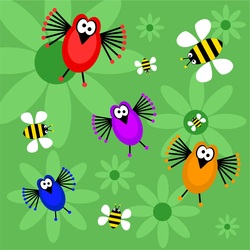|
There is nothing new, unique, or even creative about Fifty Shades of Grey. It’s just the latest installment of pop culture messages that teach girls and young women that truly hot and irresistible love includes some element of violence and danger.
These messages start when you’re little with Beauty and the Beast. As a girl, you learn to be nice and patient with an abusive partner, and as long as you remain so, he will change his behavior and transform into a Prince. It doesn’t matter that he’s throwing things at you, locking you up in a room, not letting you eat without him, not letting you get to your father…he will change…you just need to tame him. But Beauty and the Beast isn’t real….
19 Comments
I was facilitating a workshop for parents the other night, and there was some confusion over the difference between gender and sexual identity. So, I thought I’d do a quick post on some terminology, and share this helpful video that is really simplistic, yet clear, and suitable for most ages. Understanding the differences in gender, sexual orientation, biological sex, and sexual behavior can be legitimately confusing unless you happen to have had a course on gender or sexuality. For example, many people think of gender in a binary way, but it is more widely accepted as a spectrum (1). There is also the issue of intersectionality, where an individual’s gender identity meets their sexual identity (2), highlighting the importance of considering the nuances of identity and not trying to simply put people in clearly marked boxes. Then, there is the whole issue of sexual behavior. For example, some heterosexually-identified women kiss or engage in other sexual behavior with other women (3), and like the video suggests, some heterosexually-identified priests don’t engage in any sexual behavior. Therefore, sexual behavior does not determine sexual identity. In sum, not everyone agrees on the best terminology to use, but here are some terms that are pretty widely accepted with definitions mostly from GLAAD:
Sex: The biological classification of people as male or female. At birth, infants are typically assigned a sex based on a combination of internal and external genitalia and in some cases, chromosomes. Talking about ‘the birds and the bees’ with your kids has never been easy for any generation, but it has also never been as important to do as it is today. If you don’t talk about ‘the birds and the bees’ with your kids, the internet will. In the internet version, the birds and the bees have an orgy and they record it. Then one of the birds posts the video on an inter-species revenge porn site and as a result, one of the bees can’t get into the college of her choice. In other words, your kids are learning about sex whether or not they get comprehensive sexuality education at school, whether or not their friends are abstinent or sexually active, and whether or not you have had ‘the talk’.
I’ve been thinking a lot about the word ‘girl’ lately. Especially since I saw a new marketing campaign for an engineering toy for girls, Goldiblox, go viral. I thought the advertisement was cleaver and fun to watch. What got me thinking, was the disappointment and concern over Goldiblox being too “girly”, “girlified”, or “girlish”. The fear seems to be that Goldiblox will reinforce gender stereotypes. I do not have this fear. The only thing Goldiblox has done is add much-needed variety to toys that are marketed to girls. Since the 80s, girls have mostly been marketed princess and pink. The backlash to the “pinkification” of girls’ toys has come mostly in the form of mothers encouraging their daughters to abandon the “girly-girl” and get “tough” through sports and “smart” through engineering and math. Consequently, the message became girls who like princesses or pink can’t be tough or smart. That being “girly” is not being tough or smart. Therefore, girls aren’t tough or smart.
|
About this Blog:I'm here to help us discuss sexuality, gender, and media by integrating information from academic and mainstream sources. I hope this resource produces more sexually competent people who raise sexually competent kids. Categories
All
|



